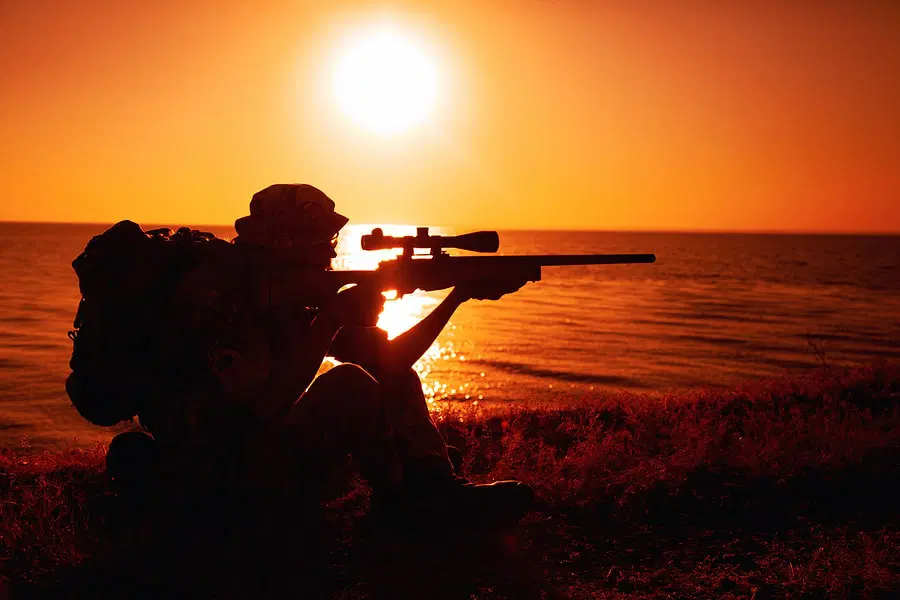There are a number of factors that affect the speed of a sniper bullet. The type of gun, the type of ammunition, and the distance the bullet is fired are all important considerations.
A typical sniper rifle can fire bullets at speeds of over 1,000 feet per second. However, the exact speed will vary depending on the specific gun and ammunition being used. For example, a high-powered rifle may be able to fire bullets at speeds approaching 2,000 feet per second.
The distance the bullet is fired also plays a role in its speed. A bullet fired from close range will not travel as fast as one fired from a long distance. This is due to air resistance, which increases as the bullet travels through the air.
In general, the farther a bullet travels, the slower it will be when it reaches its target. This is why snipers must take into account the range of their targets when calculating how fast their bullets will travel.
How does the speed of a bullet affect its accuracy and lethality?
The speed of a bullet affects its accuracy and lethality in a number of ways. First, the faster a bullet is moving, the less time it has to deviate from its course. This means that a faster bullet is more likely to hit its target.
Second, the speed of a bullet affects its penetration power. A faster bullet will penetrate deeper into a target than a slower one. This is why high-powered rifles are often used for long-range shooting – their bullets can travel at speeds that allow them to penetrate deeply into targets, even at great distances.
Finally, the speed of a bullet affects its kinetic energy. The higher the kinetic energy, the more damage the bullet will inflict on its target. This is why sniper bullets are designed to travel at very high speeds – so that they can cause maximum damage to their targets.
What are some of the fastest bullets in history?
There have been a number of fast bullets fired throughout history. In terms of actual speed, the fastest bullet ever fired was from a railgun. This gun uses electromagnetic force to accelerate a metal slug to speeds of over 7,000 feet per second.
While this is an impressive feat, it should be noted that railguns are not practical weapons. They are large and difficult to operate, and their high speeds make them difficult to control. For these reasons, they are not typically used by snipers or other marksmen.
The fastest bullets ever fired in combat were from the German Mauser sniper rifle. This rifle was used during World War II, and its bullets could travel at speeds of over 4,000 feet per second.
While these bullets were extremely fast, they were also very unstable. This made them difficult to control, and they often broke up in mid-air. As a result, they were not particularly accurate or lethal.
How can you improve your shooting accuracy to achieve faster speeds for your bullets?
There are a number of ways you can improve your shooting accuracy to achieve faster speeds for your bullets. First, make sure you are using the right gun for your needs. If you are trying to shoot long-range targets, you will need a rifle that is designed for long-range shooting.
Second, practice your aim. The more you practice, the better you will become at hitting your target.
Third, use the right ammunition. Different types of ammunition have different ballistic properties. Some types of ammunition are designed to travel faster than others. Choose the type of ammunition that is best suited for the task at hand.
Fourth, take into account the wind speed and direction. The wind can play a big role in determining how fast your bullet will travel. If you are shooting in windy conditions, make sure to adjust your aim accordingly.
By following these tips, you can improve your shooting accuracy and achieve faster speeds for your bullets.
Can you shoot a bullet through two different objects and have it come out the other side intact?
It is possible to shoot a bullet through two different objects and have it come out the other side intact. This is called “ricochet shooting.” Ricochet shooting requires a great deal of skill and practice, as it is difficult to control where the bullet will go after it bounces off of the first object.
There are a number of factors that can affect ricochet shooting, such as the type of gun being used, the type of ammunition being used, the angle at which the bullet hits the first object, and the hardness of the objects being shot.
In general, ricochet shooting is more difficult with softer objects, as they tend to absorb more of the bullet’s energy. Ricochet shooting is also more difficult with smaller objects, as they offer less surface area for the bullet to bounce off of.
With that said, ricochet shooting is still possible with any type of gun and ammunition. It just requires a great deal of skill and practice to master.
Are there any disadvantages to using faster bullets?
While faster bullets have a number of advantages, there are also some disadvantages to consider. First, faster bullets are more difficult to control. This can make them less accurate than slower bullets. Second, faster bullets tend to be more unstable and can break up in mid-air. This can also make them less accurate and less lethal.
Third, faster bullets tend to be more expensive than slower bullets.Fourth, faster bullets produce more noise when they are fired, which can alert your target to your presence.
Overall, faster bullets have a number of advantages and disadvantages that you should consider before using them. Choose the type of bullet that is best suited for your needs and the situation you are in.

